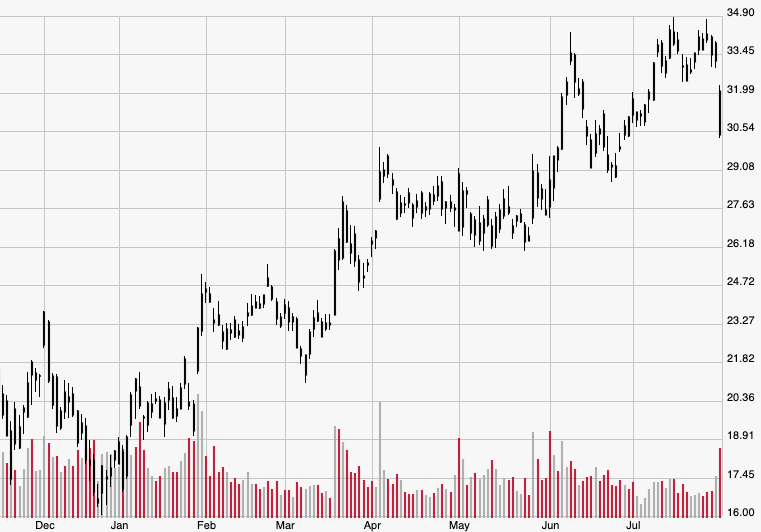The strange thing about Wednesday’s sell-off is that investors across the board expected the Federal Reserve to cut interest rates. After raising the benchmark federal funds rate up to the 2.25%-2.5% range over the course of nine hikes since December 2015, economists and other market participants factored in a roughly 78% chance of the central bank lowering it this month for the first time since 2008. The likelihood was baked in to the point that investors pushed the Dow Jones Industrial Average up 9.6% from the May 31 bottom, with the S&P 500’s 9.5% gain not too far behind.
So it shouldn’t have been a shock when investors’ prediction came true and Fed Chair Jerome Powell cut the federal funds rate by 25 basis points. It marked just the fifth time in the last 25 years that the Fed abruptly shifted from raising rates to lowering them, with most economists viewing it as an “insurance cut” against escalating trade tensions with China, slowing global growth, and less-than-stellar inflation numbers. That last factor has grown more concerning in the market consciousness lately, as recent data indicates inflation levels are below the 2% target conceived earlier this year.
But markets reacted as if the decision were unexpected. The Dow Jones plunged 1.2% to a three-week low of 26,864.27, while the S&P 500 followed suit with a 1.1% loss to 2,980.38. The S&P’s decline seemed more substantive since the index hadn’t moved more than 1% in either direction in 36 sessions. Losses were widespread across each index’s components despite the biggest losers enduring heavier selling pressure on the back of bad earnings — Advanced Micro Devices Inc. (AMD), for instance, fell more than 10% to a one-month low of $30.45 after reporting a 13% drop in revenue from last year.

While rate cuts fundamentally signal an easy-money environment meant to spur spending and increase economic activity, investors tend to be on pins and needles during the Fed Chair’s post-decision statements. Powell has been a particularly interesting central bank leader in that department, often throwing markets for a loop with intentionally murky language. On Wednesday, he made a point of noting how this month’s rate reduction likely isn’t the start of a dovish rate environment, instead referring to it in terms that anyone who saw it as an “insurance cut” should have expected: a “midcycle adjustment to policy.”
His further statements certainly didn’t ease investors’ minds regarding more rate cuts down the road. He managed expectations by explaining how “that refers back to other times when the FOMC has cut rates in the middle of a cycle and I’m contrasting it there with the beginning of a lengthy cutting cycle.” He summarized his notion by saying “that is not what we’re seeing now, that’s not our perspective now.”
This is a unique rate cut in that, compared to the past, it certainly seems like a one-off move. There’s a reason these kinds of cuts haven’t happened in 25 years, which makes most market reactions to past rate reductions seem somewhat invalid. Since 1990, the S&P has seen an average gain of 0.16% the day the federal funds rate is reduced by 25 basis points — or 0.25%. The index has seen an average 0.6% rise the month following a 0.25% reduction over the same 29-year period.
The rate cuts from that sample size mostly occurred when the economy was in dire straits, which, despite the looming negative factors of a trade war and lower-than-expected inflation, investors aren’t really seeing at this moment. The number of non-farm payroll jobs soared by a whopping 211% between May and June of this year. On Tuesday, the Commerce Department reported that consumer spending, which accounts for more than 66% of all U.S. economic activity, climbed 0.3% last month and met economist expectations.
Growth is still growth, so investors shouldn’t overreact just yet. Powell and other policymakers took the precaution of lowering rates in order to maintain the 10-year long economic expansion that’s been enjoyed by investors and consumers alike. Stocks will likely rebound as investors shake off Powell’s typically nebulous language and await the next Federal Open Market Committee (FOMC) meeting in September. According to the CME FedWatch tool, there’s a roughly 76% chance of yet another rate cut at that meeting, indicating that investors are in for a win-win situation both in the short term and long term.